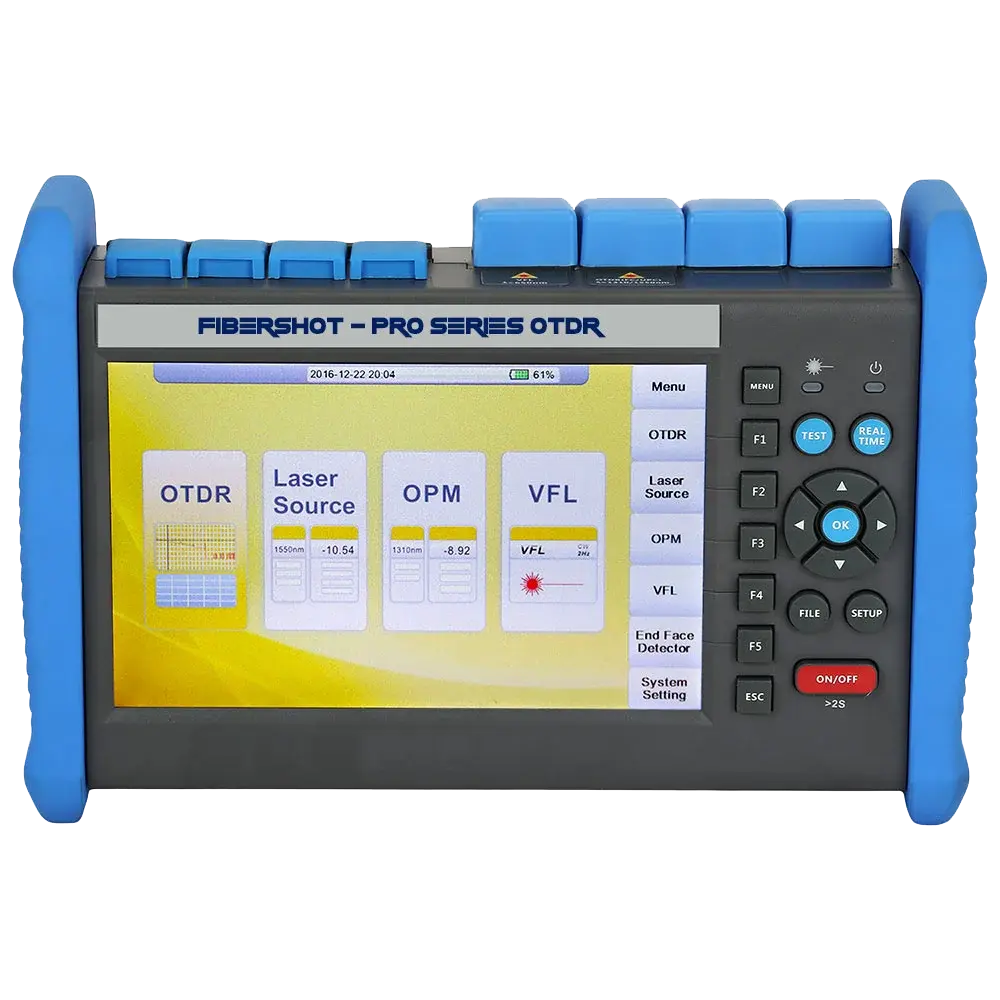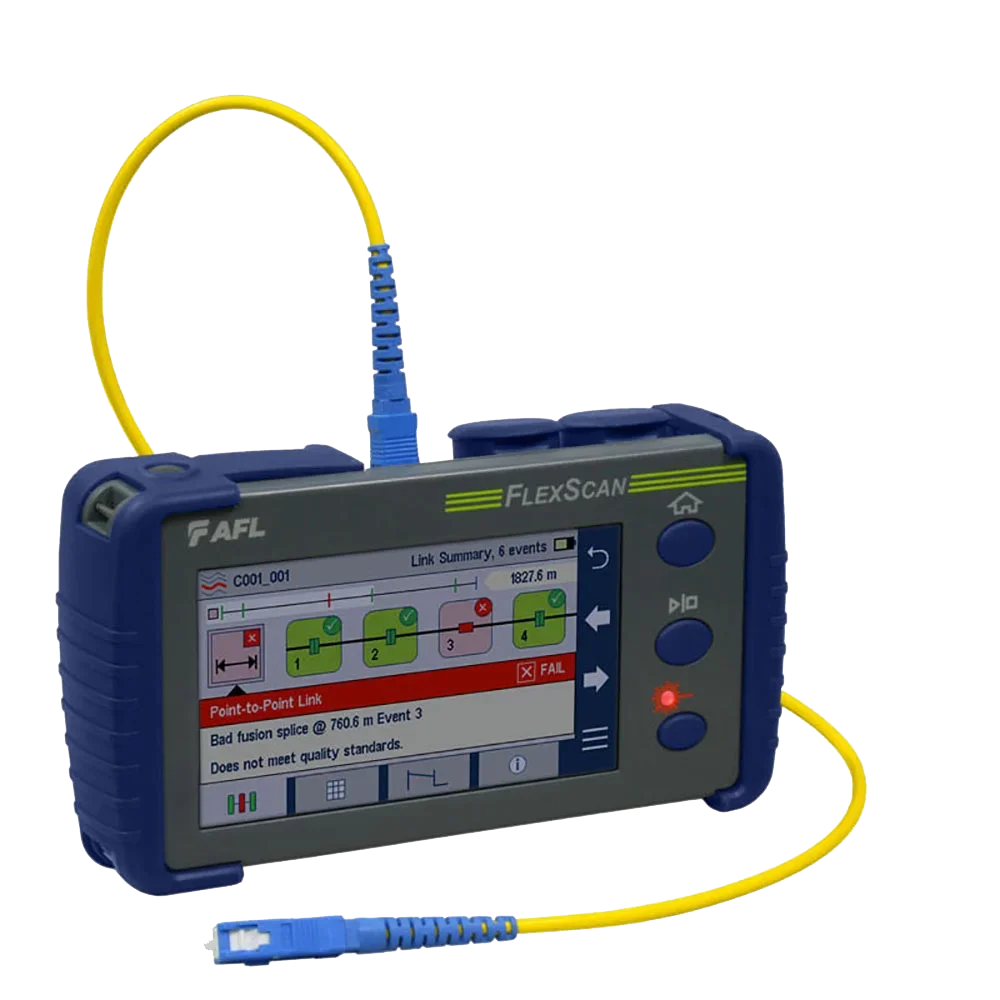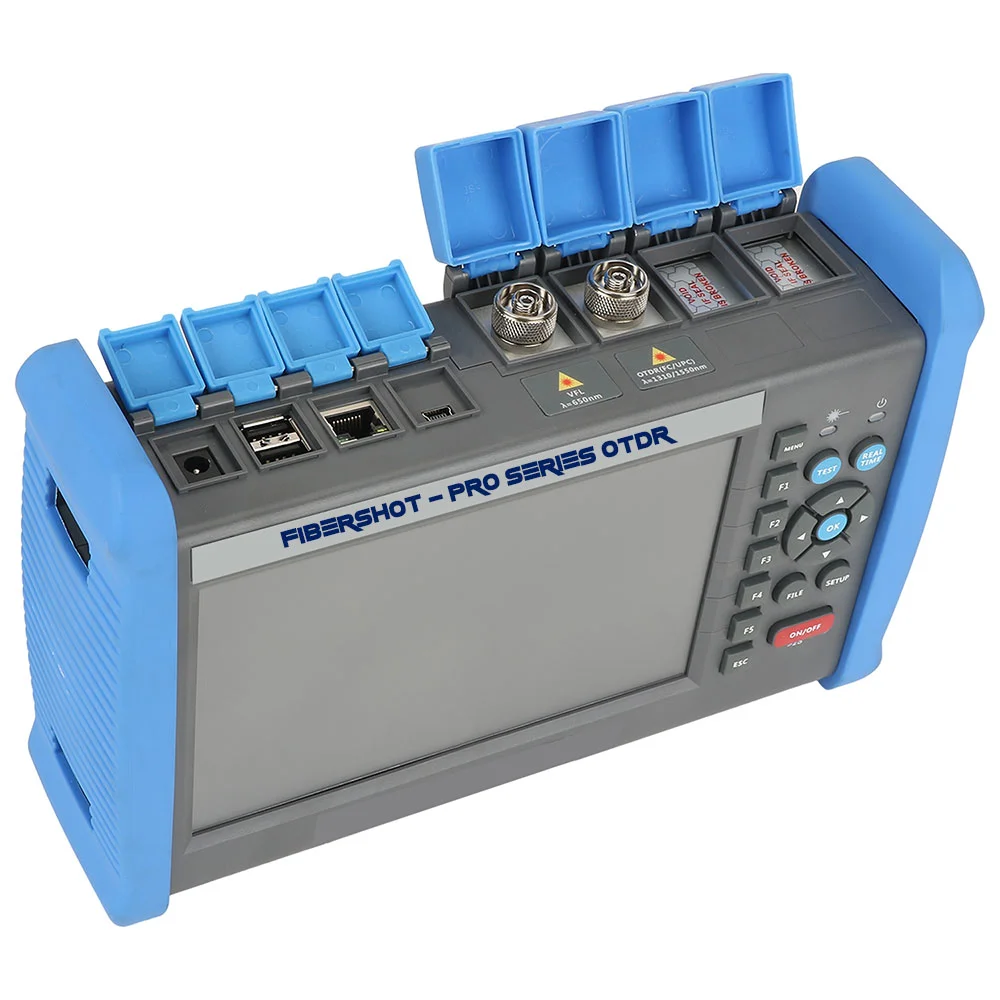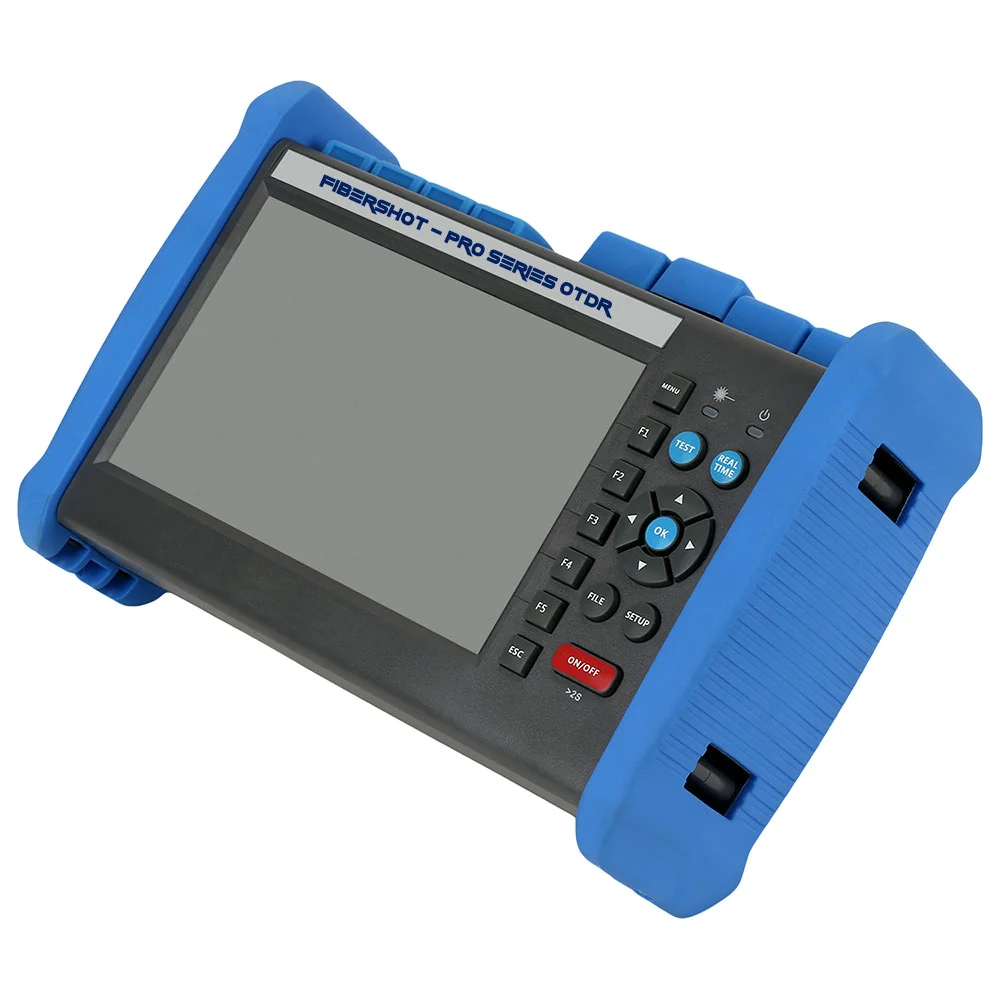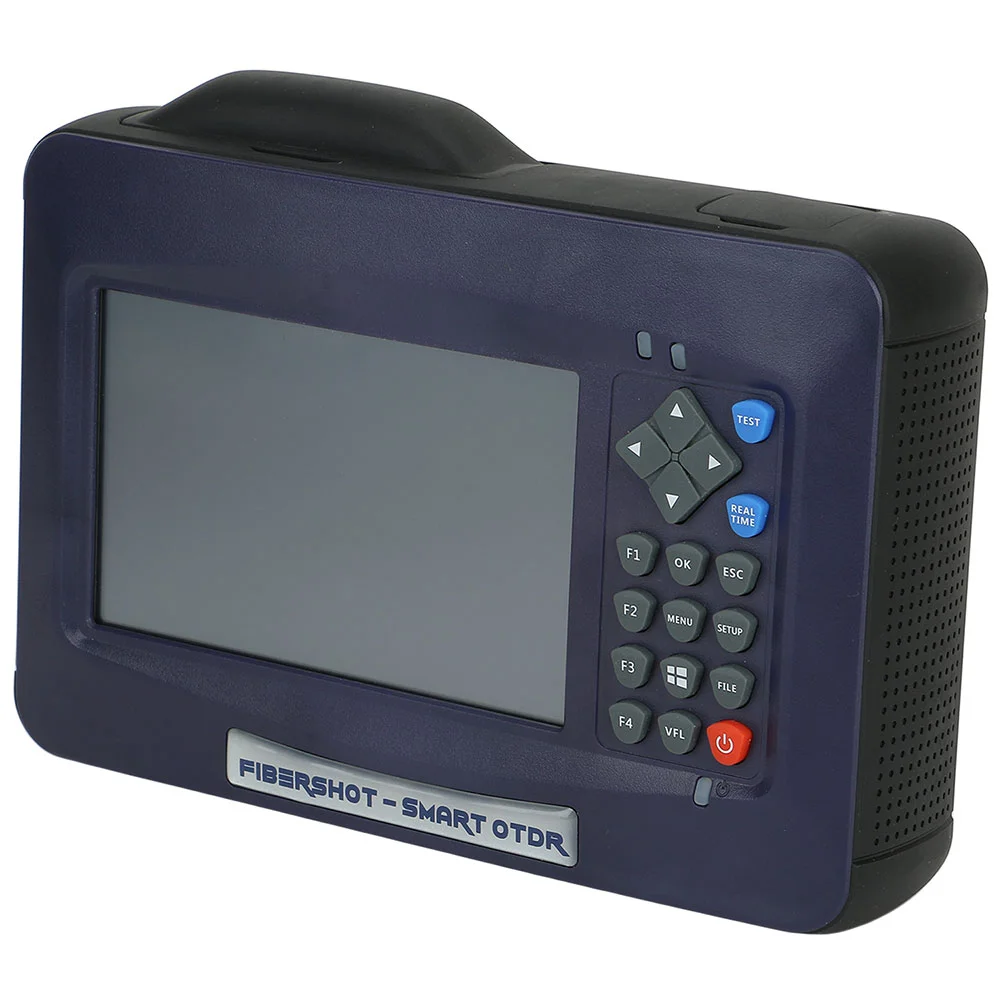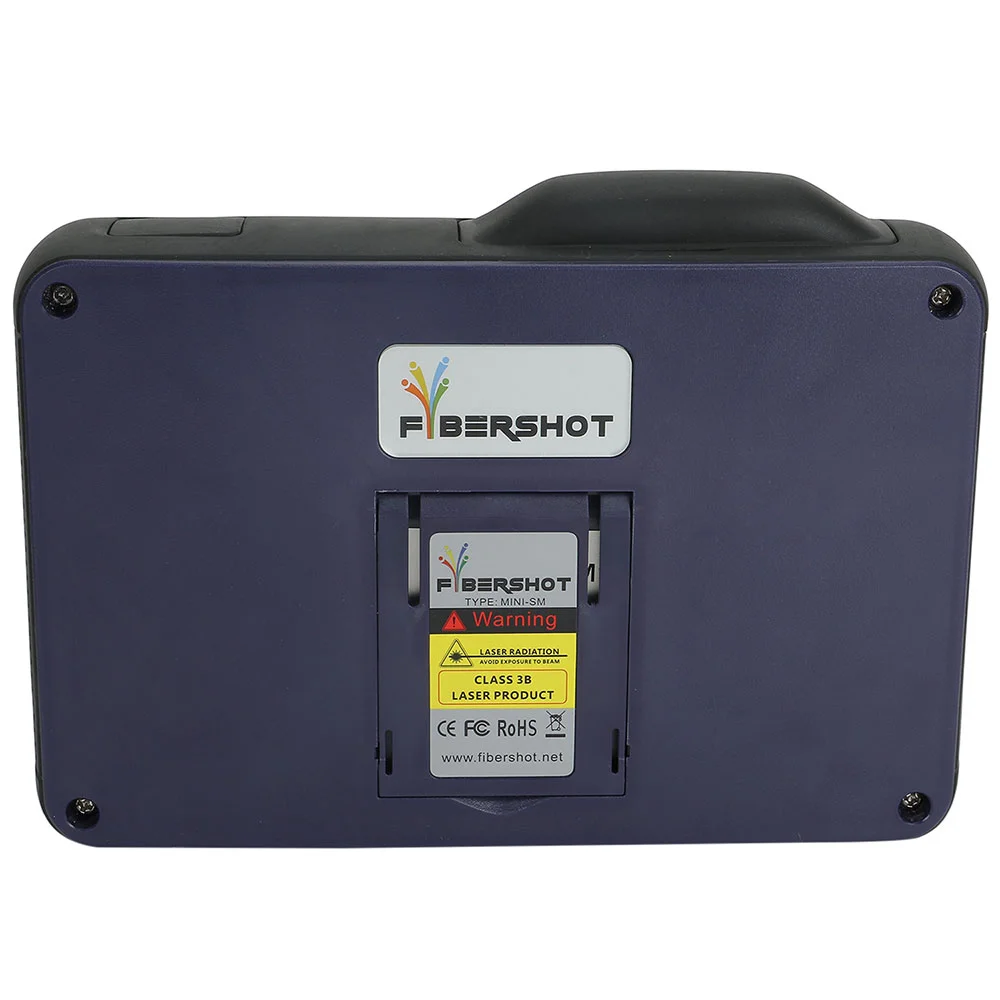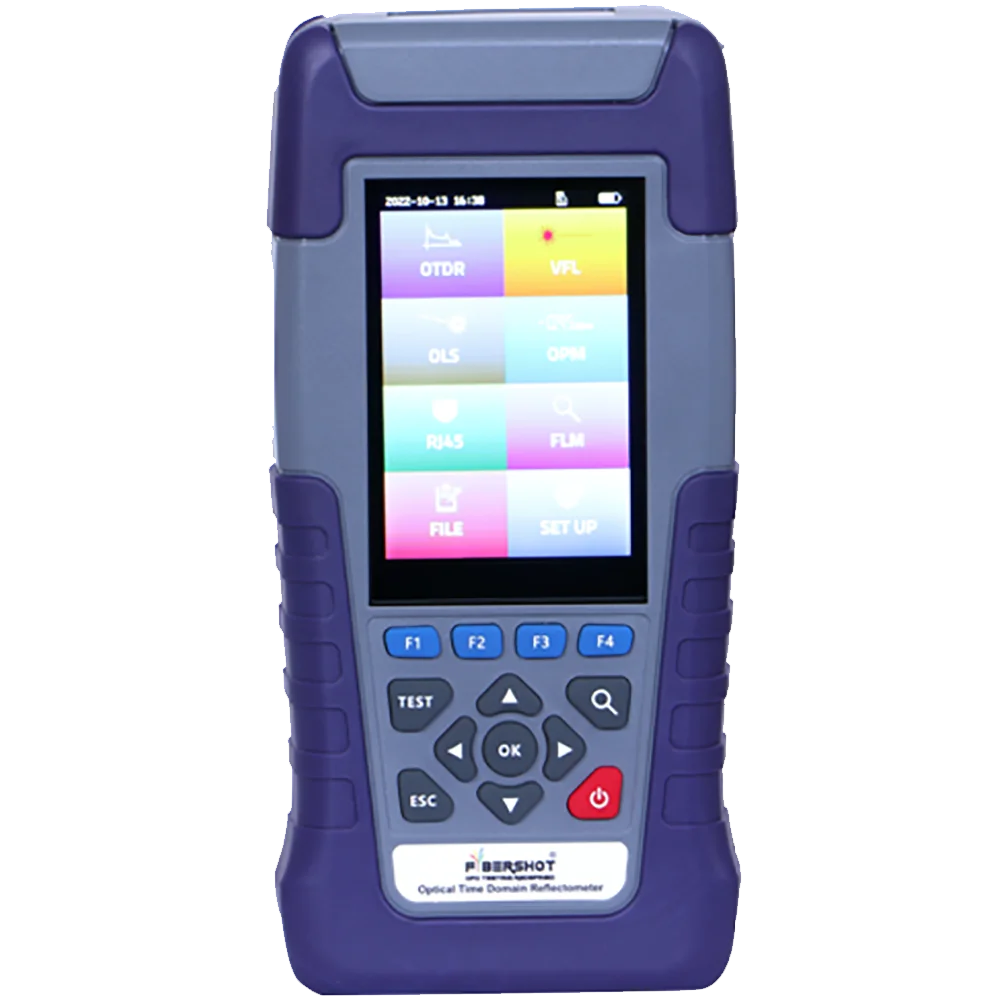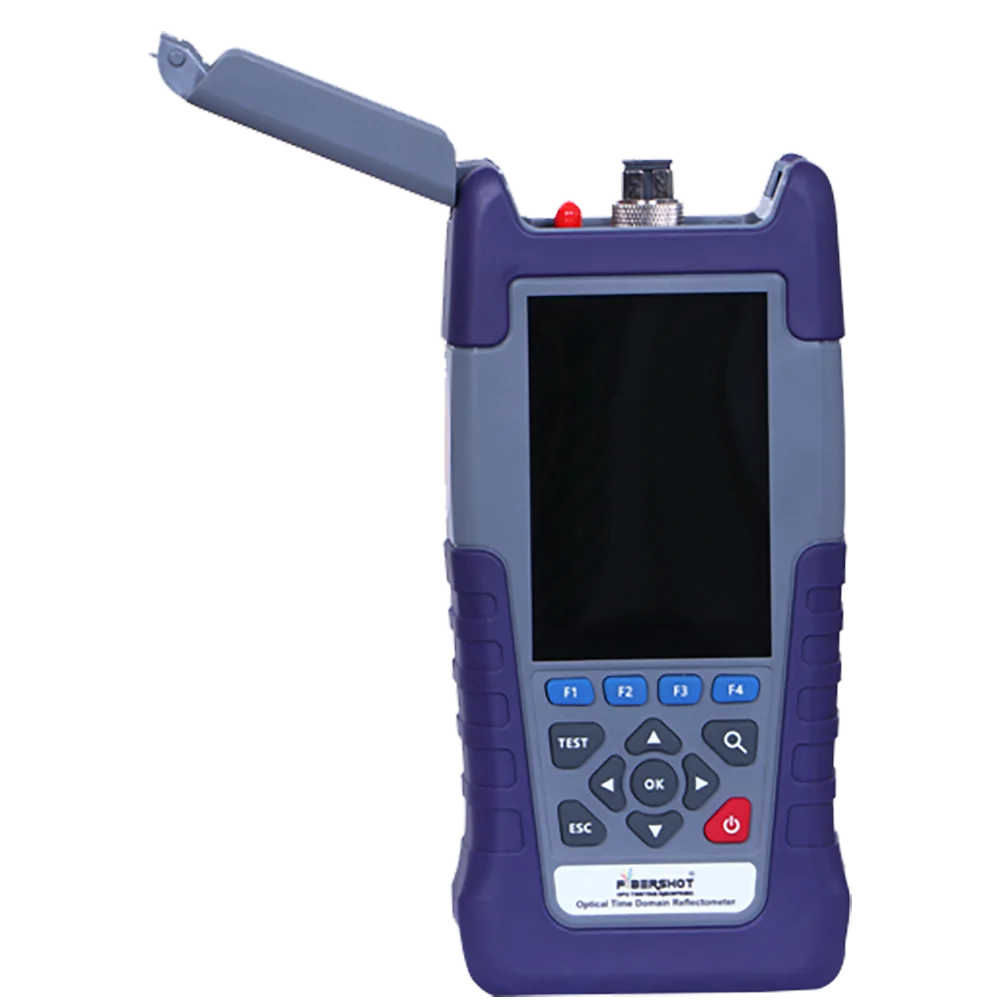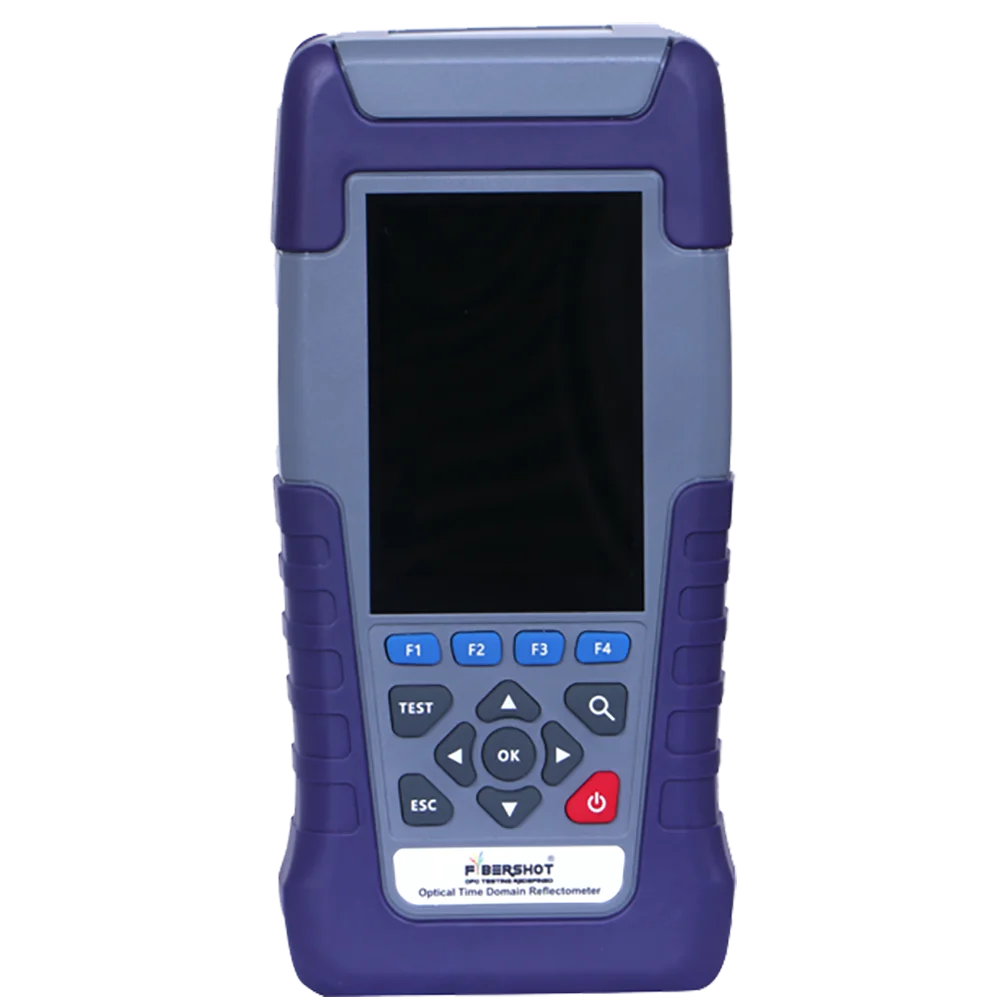Unveiling the Power of OTDR
A Comprehensive Guide
OTDR Solutions: Illuminating Connectivity, Empowering Networks.
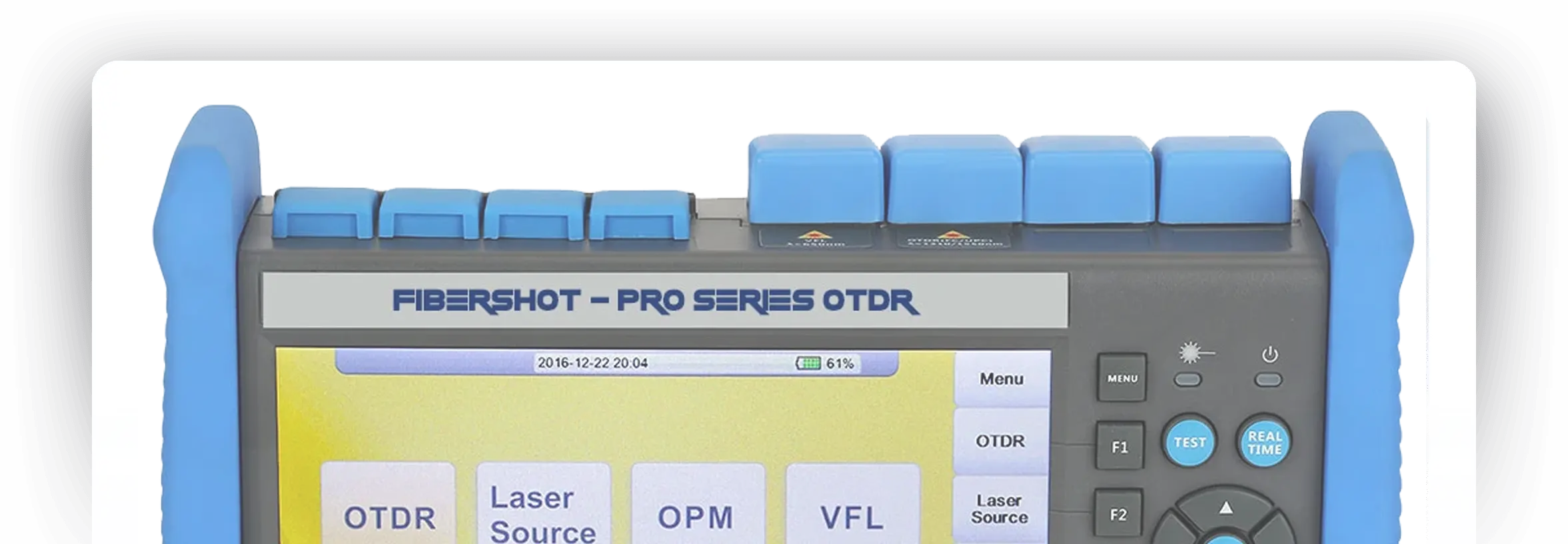
Understanding The OTDR
Anyone navigating the intricacies of fiber optic networks has to understand the possibilities of optical time domain reflectometry, or OTDR. Optical Time-Domain Reflectometry, or OTDR, is a specialized tool used to quantify the duration and intensity of reflections along optical fibers using light pulses. In doing so, it allows for the accurate localization of problems like fractures, bends, or splices and offers a thorough profile of the attenuation of a fiber. Offering unmatched insights into signal loss and dispersion, this potent tool is essential for fiber optic network installation, maintenance, and troubleshooting. This essay will examine the inner workings of OTDR, clarifying its functions and emphasizing how vital it is to maintaining the dependability and efficiency of optical communication networks.
Revolutionary
Focused Features
Fibershot Pro series Optical Time Domain Reflectometer (OTDR) is an intelligent meter of a new generation for the detection of fiber communications systems.
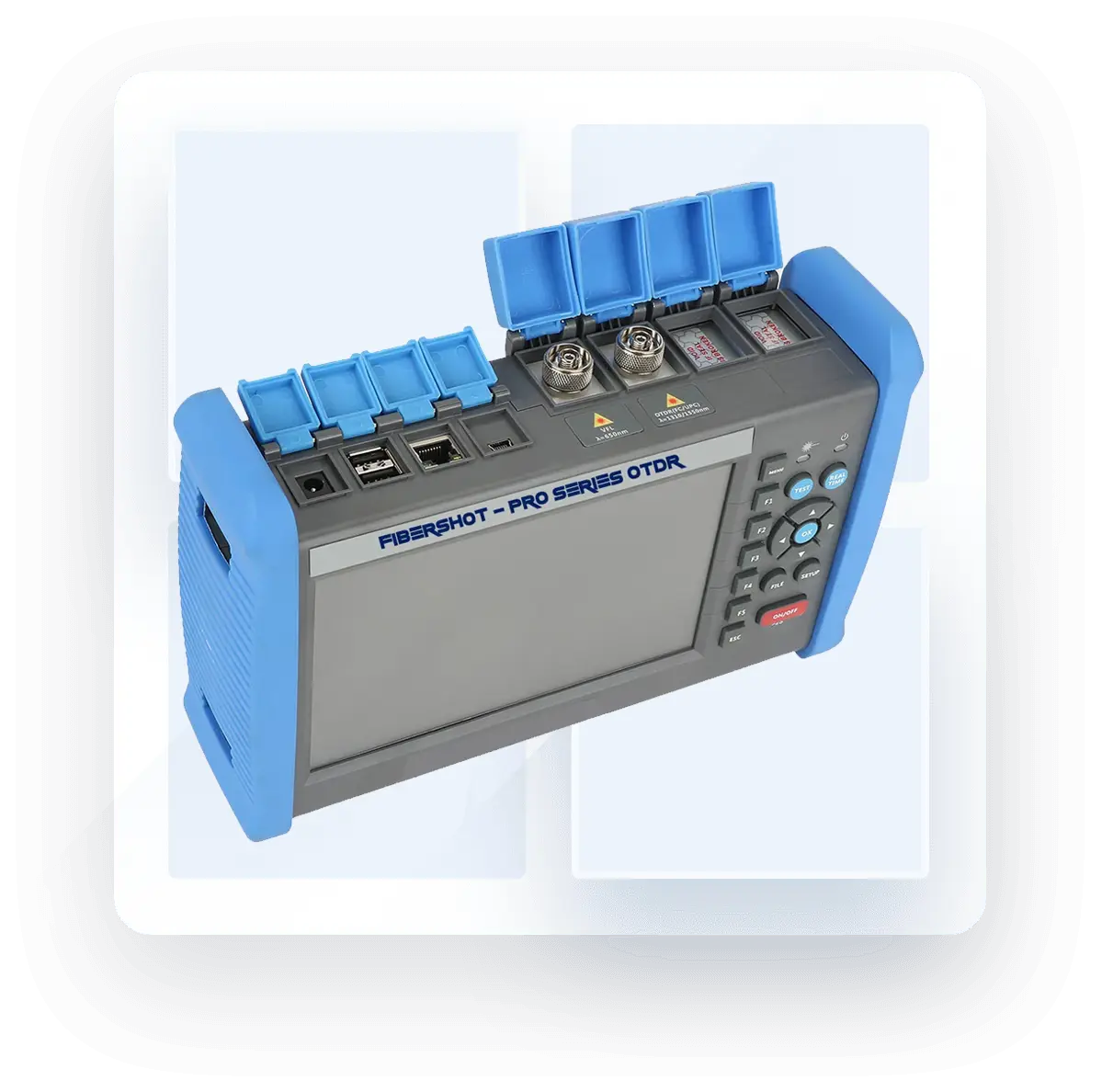
Applications of OTDR
Fiber optic network installation and maintenance: OTDR plays an important role in the installation phase, verifying the quality of the fiber optic connection. It is also essential for ongoing maintenance, as it helps to identify and locate faults quickly.
Fault localization: OTDR accurately locates faults like breaks, bends, and splice issues, making it possible to troubleshoot and resolve them quickly.
Characterization of fiber optic links: OTDR helps to evaluate the performance and quality of fiber optic links by emitting pulses of light, and carefully examining the resulting reflections. This characterization goes beyond simply identifying the faults, as it provides a detailed profile of the signal loss and the dispersion of the fiber optic link. Characterizing fiber links is one of the most important steps in the optimization of modern communication networks. In the world of fiber optics, “characterization of fiber links” is the name given to the process of analyzing fiber optic links.
How OTDR Works
Optical Transducing Radio-communications (OTDR) is a process in which short pulses of light are fed into the optical fiber transducer (OTDR) and the backscattered (or reflected) light is analyzed to determine the attenuation profile of the fiber and identify anomalies such as bending, breaks or splices.
The statement “Key components: The laser source, coupler, photodetector and processor that interpret the reflected signals” outlines the key components that make up an OTDR. Let’s look at the key components of an optical time-domain reflectometer:
What is a Laser Source?
A laser is a device that produces a short burst of light that is sent to the optical fiber being measured. The laser is an essential part of the Optical Tomography Reflection and Backscattering Detector (OTDR).
What is a Coupler?
The coupler plays a vital role in transmitting and receiving optical signals. It guides the laser pulses through the fiber and collects the reflected or backscattered light.
What is Photodetector?
Photodetectors are responsible for capturing reflected light resulting from interactions within an optical fiber. They convert the optical signals to electrical signals, which can then be analyzed by OTDRs.
What is a Processor?
The processor is the operating system of the Optical Time-Domain Reflectometer. It interprets the electrical signals sent to it by the photodetector and interprets them into a visual representation known as the OTDR trace. It also interprets the time and intensity of the reflections, enabling technicians to determine the location and cause of any problems along the fiber.
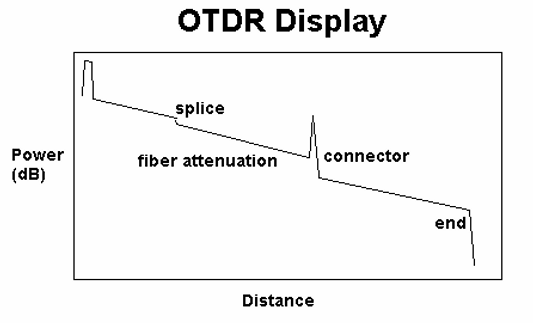
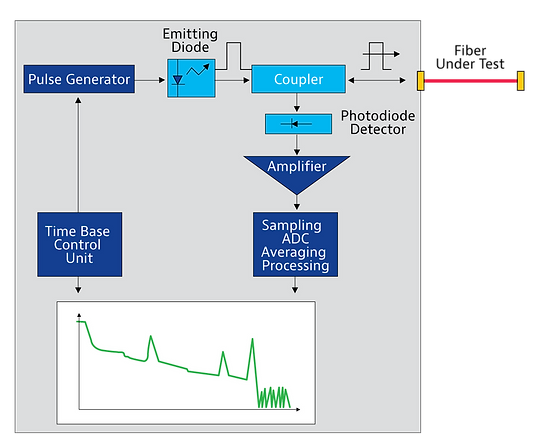
Interpreting OTDR Results
Trace Pattern Analysis: OTDR results are usually presented as traces on a graph. Trace patterns are essential for troubleshooting issues such as attenuation, reflections and splice losses.
How to Analyze Events with OTDR?
When it comes to troubleshooting and maintenance of fiber optic networks, the importance of events revealed by OTDR cannot be underestimated. OTDR results provide a 360-degree view of events along the fiber optic network, such as connectors, splices and breaks.
A successful interpretation of events is essential for effective network troubleshooting. Network professionals must be able to identify the location, type and importance of each event in order to develop targeted solutions.
Whether it’s detecting a minor signal disturbance at a connector or dealing with a more significant break in a fiber, OTDR’s ability to illuminate events allows technicians to quickly and accurately diagnose problems.
In this article, we’ll take a closer look at how to analyze events with OTDR and how it plays an important role in maintaining fiber optic networks integrity and performance.
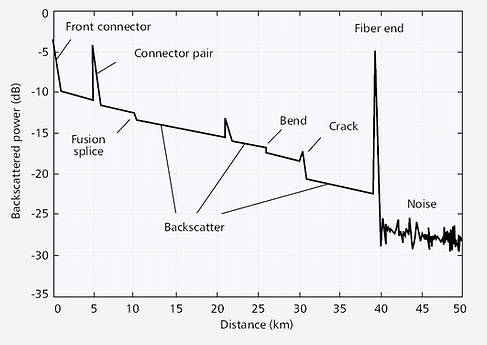
Best Practices for OTDR Testing
Optical Time-Domain Reflectometers (OTDRs) can be used for a variety of applications, but one of the most important aspects of using an OTDR is making sure it’s set up correctly. This includes setting the correct pulse width and wavelength, which are essential for accurate and reliable measurement. The pulse width specifies how wide the OTDR trace will be and how deep it will travel. The wavelength setting must match the characteristics of the test optical fiber.
Calibration: Optical time-domain reflectometers (OTDRs) are used to measure fiber optic networks and troubleshoot problems. Calibration is the process of setting up an OTDR in a precise and correct way to get the best performance out of it. Careful configuration of important parameters such as the pulse width and the wavelength is essential for accurate measurement and troubleshooting. The choice of the pulse width determines the ratio between resolution and depth of analysis within an OTDR trace. The wavelength settings must match the properties of the fiber optic fiber being examined for accurate results.
Documentation: Document all measurements, including the fiber length, events, and any issues found. This documentation is invaluable for future reference and troubleshooting.
Best Products of 2024
How to Choose a Perfect OTDR?
In the last few years, there has been a huge increase in the use of optical fiber in the network communication sector. To ensure the dependability and availability of fiber networks, a more accurate and faster method of assessing the integrity of infrastructure is required.
Selecting the right fiber optic testing instrument is important, not only because of the increased testing requirements but also to improve the overall performance and value of your network. Of all the testing tools available, OTDR is one of the best and most powerful tools for performing detailed and effective fiber cable testing.
Optical time-domain reflectometers (OTDRs) are essential for keeping your fiber optic networks running at peak performance. There are several factors to consider when choosing an OTDR. First, there is the wavelength range. This determines whether the OTDR is compatible with different fiber types. Secondly, there is dynamic range. Dynamic range affects the OTDR’s ability to pick up signals in various noise levels.
Thirdly, spatial resolution determines the exact position of events on a fiber. It’s important to consider all of these factors carefully when picking an OTDR. It’s also important to customize the choice to match your network’s specific needs and nuances. We’ll walk you through the process to help you make the best fiber optic infrastructure choice for your network.
LET’S COMPARE THE OTDRs
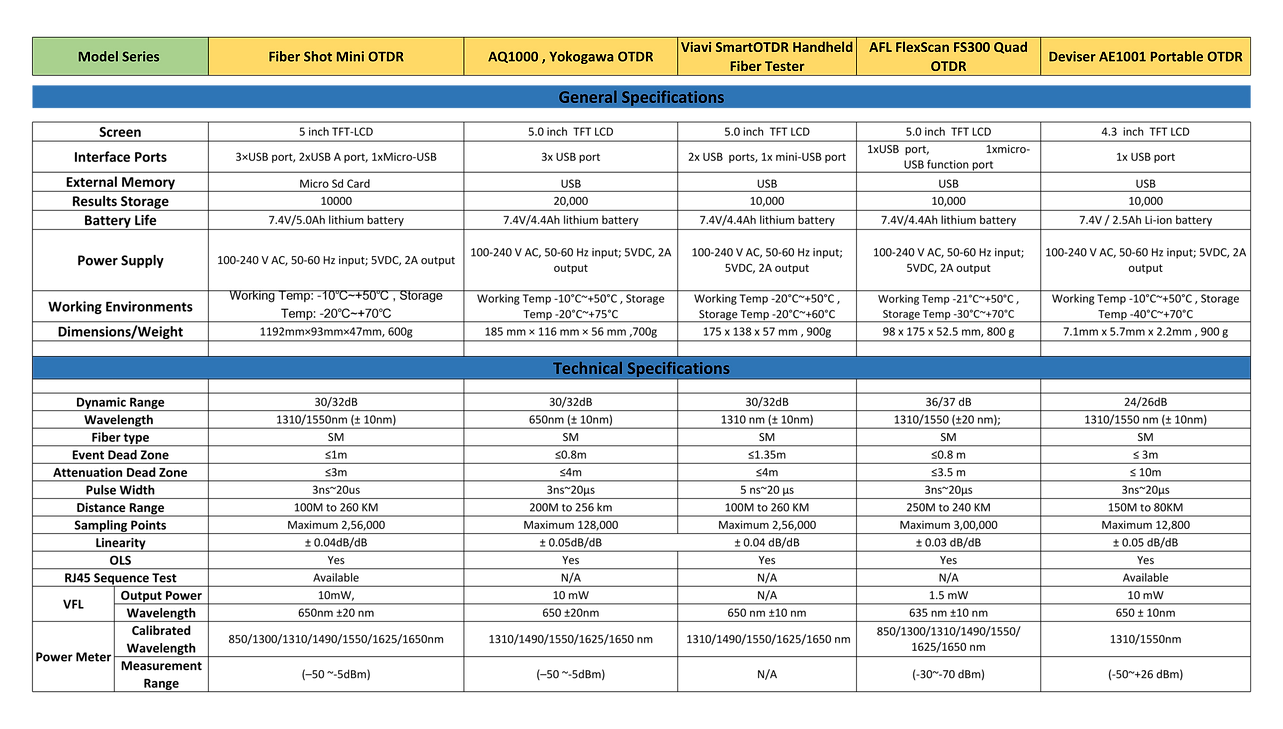
Why Fibershot Mini OTDR Stands Out as the Best Overall
Selecting the finest overall device in the dynamic world of optical time domain reflectometers (OTDRs) is essential to preserving the integrity of fiber optic networks. One name sticks out among the wealth of options: Fibershot Mini OTDR. In this investigation, we examine the essential characteristics that set Fibershot Mini apart as the finest option overall for those looking for an OTDR.
1. Unmatched Precision: The Fibershot Mini OTDR is the representation of accuracy. Its state-of-the-art equipment guarantees precise and trustworthy measurements, offering a complete picture of the optical network’s condition.
2. Compact and Portable Design: Fibershot Mini shines in this area. In the realm of OTDRs, size counts. Because of its small size and portability, it is the perfect tool to have with field technicians.
3. Effective Fault Detection: Fibershot Mini OTDR locates and detects faults with an efficiency that is unmatched. Thanks to its advanced capabilities, problems including bends, breaks, and connector problems can be quickly identified.
4. User-Friendly Interface: It’s never been simpler to navigate the complexity of optical network diagnostics. Because of its simple UI, Fibershot Mini is usable by professionals of all colors.
5. Versatility in Field Applications: The Fibershot Mini OTDR performs admirably in real-world situations in addition to lab settings. Because of its flexibility in field applications, it is a great choice for specialists operating in a variety of setting.
How We Test OTDR for Optimal Performance?
We recognize that Optical Time Domain Reflectometers (OTDRs) are essential to maintaining the security of fiber optic networks. Our dedication to providing excellent OTDR solutions starts with through testing processes that ensure the accuracy and precision of our equipment.
1. Accurate Calibration: Every OTDR is carefully calibrated before it is released from our facilities. Our calibration procedure guarantees that the device’s measurements are precise, dependable, and constant. To ensure the highest standards of precision, we use advanced calibration standards.
2. Performance Testing: A thorough performance test is conducted on every feature of our OTDR devices. We carefully consider every parameter to guarantee ideal performance, from the dynamic range to the detection sensitivity. Our products go through an intense testing procedure that copies real-world circumstances in order to ensure dependable operation in a variety of settings.
3. Fault Simulation: We model a range of fault situations in order to verify the fault detection capabilities of our OTDRs. This involves evaluating the tool’s capacity to precisely detect and discover flaws such connections, bends, and breakage. We make sure your OTDR is ready to tackle any problems that can occur in your optical network with our testing procedure.
4. Assessment of the User Interface: An important component of any testing device’s efficacy is its usability. We assess our OTDRs’ user interfaces to make sure they are simple to use and intuitive. During this testing step, the device’s overall usability, ease of navigation, and result clarity are evaluated to ensure that professionals of all skill levels can effectively utilize it.
5. Field Testing: We carry out field testing in a variety of settings to confirm the practicality of our OTDRs. During this stage, we conduct on-site evaluations to see how the device functions in real-world situations and make sure it can withstand the demands of various optical network configurations.
6. Continuous Quality Assurance: After the initial testing stage, we are dedicated to maintaining high standards of quality. We use ongoing quality control procedures, such as routine upgrades, to adjust to market developments and guarantee that our OTDRs stay on the cutting edge of technology.
Subscribe to our newsletter.
Receive updates directly to your inbox.

